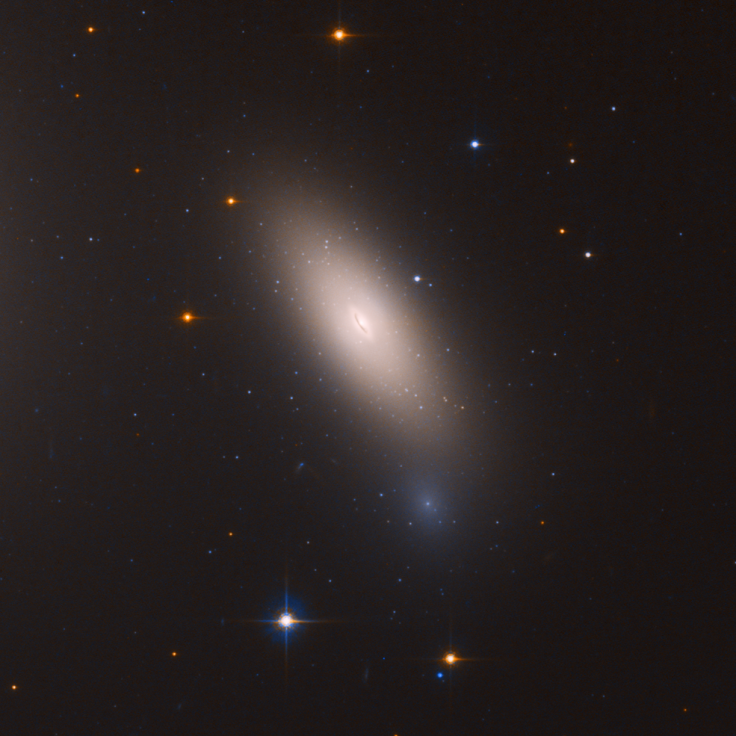Hubble Spots Ancient Galaxy With Twice As Many Stars As Milky Way

NASA's Hubble telescope has spotted an ancient galaxy packed with millions of stars, right in our cosmic backyard. Astronomers tasked the Hubble telescope with this Indiana Jones-type quest to hunt for a “relic galaxy” close to our own, so they could better understand how galaxies evolved billions of years ago.
The ancient galaxy, called NGC 1277, came into existence with a bang long ago, giving birth to new stars around 1,000 times faster than observed in our own galaxy. However, the galaxy eventually went dormant after failing to gather enough material to grow in size and is now in a state of “arrested development.” This galaxy houses numerous oddly assembled and rare stars, which according to NASA, have “essentially unchanged for the past 10 billion years.”
Although Hubble previously spotted such galaxies in the early universe, this is the first time it has found such a stellar island nearby.
“We can explore such original galaxies in full detail and probe the conditions of the early universe,” Ignacio Trujillo of the Instituto de Astrofisica de Canarias at Spain's University of La Laguna, said in a statement.
Scientists estimated around one in 1,000 massive galaxies is an oddball galaxy like the NGC 1277. The galaxy's current state can be determined by the globular cluster of stars surrounding it. Giant galaxies like the NGC 1277 generally contain both metal-rich (red in appearance) and metal-poor (blue in appearance) globular clusters. However, researchers discovered the NGC 1277 has nearly no blue globular clusters.
"I've been studying globular clusters in galaxies for a long time, and this is the first time I've ever seen this," said Michael Beasley, also of the Instituto de Astrofisica de Canarias.
“The red clusters are the strongest evidence that the galaxy went out of the star-making business long ago. However, the lack of blue clusters suggests that NGC 1277 never grew further by gobbling up surrounding galaxies,” NASA said in a statement. “By contrast, our Milky Way contains approximately 180 blue and red globular clusters. This is due partly to the fact that our Milky Way continues cannibalizing galaxies that swing too close by in our Local Group of a few dozen small galaxies.”
The ancient galaxy resides near the heart of the Perseus cluster, which is home to over 1,000 galaxies, and is located 240 million light years away. However, the NGC 1277 is hurtling across the cluster at a speed of 2 million miles per hour – making it nearly impossible to merge with other galaxies or even gather materials to boost its star formation.
The scientists involved in the new study, which was published online in the March 12 issue of the journal Nature, found 50 massive galaxies as potential candidates for “arrested development” galaxies. Among these, the NGC 1277 was identified as unique because it has a central supermassive black hole that is much bigger than it ideally should be for a galaxy of that size.
"I didn't believe the ancient galaxy hypothesis initially, but finally I was surprised because it's not that common to find what you predict in astronomy," Beasley added. "Typically, the universe always comes up with more surprises that you can think about."
The researchers now hope to further study 10 other galaxies with varying degrees of “arrested development.” According to NASA, the James Webb Telescope, slated to be launched in 2019, will help researchers track and measure the motions of the globular clusters in NGC 1277 galaxy. This in turn would provide astronomers with the first chance to measure how much of early galaxies are made up of dark matter.

© Copyright IBTimes 2025. All rights reserved.





















